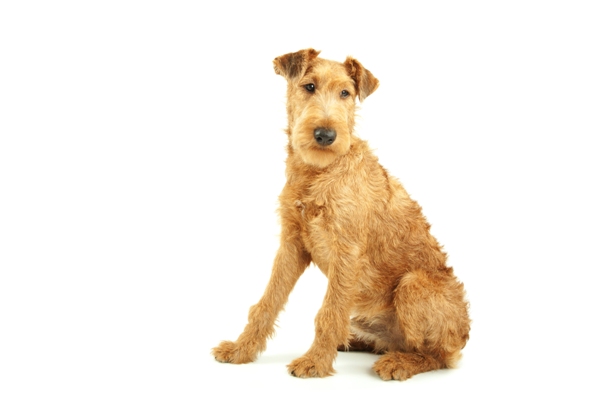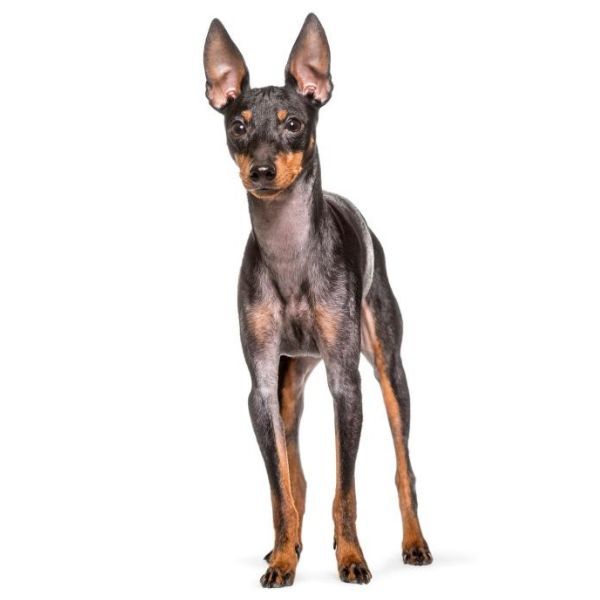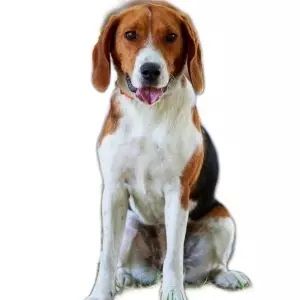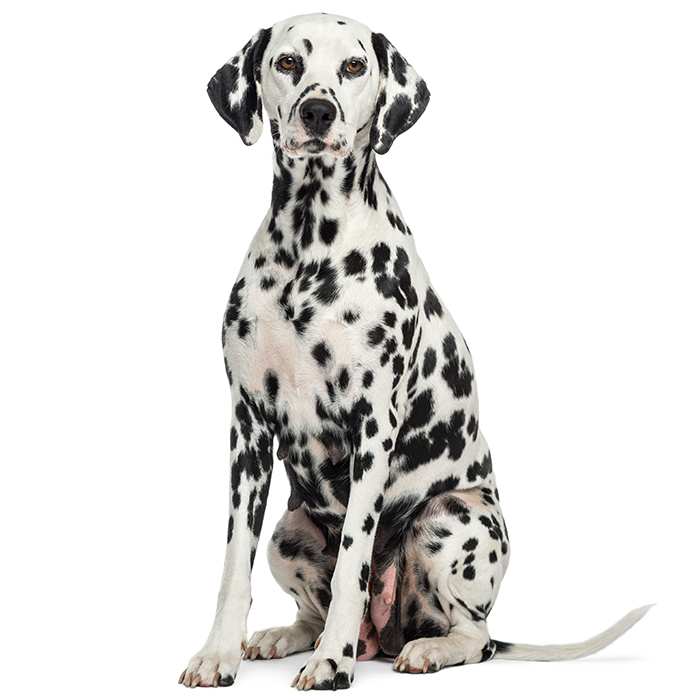Irish Terrier
Gentle, lively
This breed has an around average probability of having health issues in its lifetime, hence it is one of the more affordable breeds to insure.
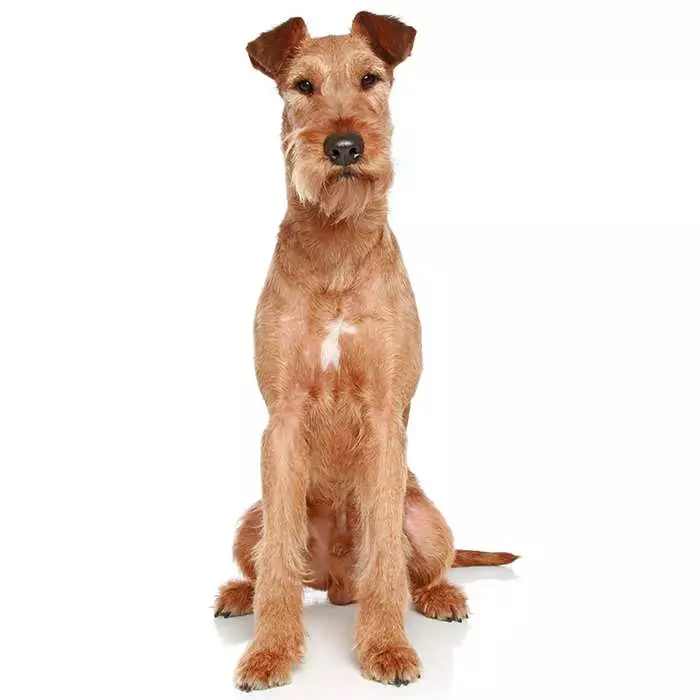
Is this breed right for you?
Try our breed selector quiz to find out your best matching breed!
Insuring a Irish Terrier?
Get our award-winning Nose-to-Tail Cover with up to $30k annual benefit limit, up to 90% of eligible vet bills back, and no sub-limits.
Get a quick quoteBreed Overview
The Irish Terrier is a medium-sized dog and one of the oldest breeds of terrier. This handsome bearded dog is active and adaptable, suitable for life both in the country and in the city.
Irish Terriers have medium-length tails and small, folded ears. The outer coat of the Irish Terrier is dense, wiry, and relatively short, while the undercoat is softer and lighter in colour. This double coat protects the dog from water and harsh weather. It is easy to groom and sheds only lightly. The Irish Terrier is usually a variation of red – bright red, golden red, red wheaten or solid wheaten, though some puppies are born with a white chest patch and some are born black and change colour as they age.
The average Irish Terrier stands 46 cm tall and weighs 12 kg if it is a male and 11 kg if it is female. The average lifespan of this breed is 12 to 15 years.
Like all terrier breeds, the Irish Terrier was bred to work. Therefore, they require plenty of exercise each day – a long, brisk daily walk should be the aim, along with lots of playtime at home.
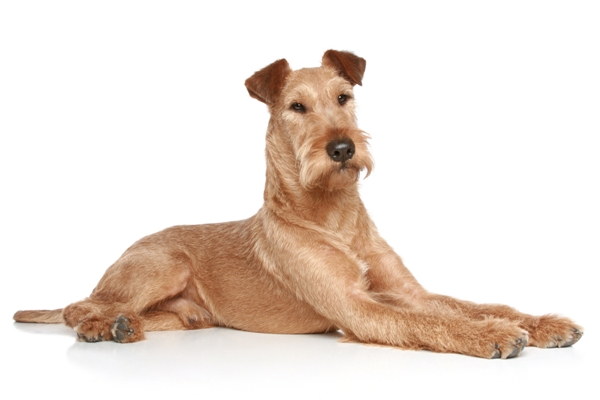
Personality and Temperament
Irish Terriers are intelligent, brave, lively dogs who respond well to training from a firm, authoritative pack leader, but may be difficult to housebreak. They are very gentle and entertaining with their families and are always up for an adventure.
Legend has it that leprechauns gave Irish Terriers to children as playmates, since their size and energy level is well suited for kids. They tend not to get along with dogs they do not know and dogs of the same sex, but early socialisation and strong leadership may help prevent aggression. One Irish Terrier, if raised with it, will get along okay with a cat, but any more than one and they may gang up on the cat. As with all terrier breeds, it is not recommended that households with Irish Terriers get any small pets such as rodents or rabbits since terriers were bred to hunt them.
Common Irish Terrier Diseases & Conditions
Symptoms, diagnosis and treatment
Irish Terrier owners are in luck – they’re generally very healthy dogs and don’t have any common health issues. However, the following can occur in some cases.
- Hip dysplasia is a condition where the thighbone and hip joint do not fit together properly, causing pain and lameness. Less severe cases can be treated with anti-inflammatory medications, but surgery may be required for serious cases.
- Cataracts. Like in humans, canine cataracts occur when a cloudy membrane forms over the eye, causing vision loss. They can be removed surgically.
- Hypothyroidism occurs when the thyroid gland does not produce enough of the thyroid hormone. Symptoms include epilepsy, loss of hair, fatigue and patchy skin. It is treatable with medication and a special diet.
- Bladder Stones. Irish Terriers may experience bladder stones, symptoms of which include painful urination, bloody urine, more frequent urination or foul-smelling cloudy urine. Smaller stones can pass by themselves, but affected dogs should still see a vet.
Not all conditions are covered by Pet Insurance. For details of Bow Wow Meow Pet Insurance cover, refer to the Product Disclosure Statement.
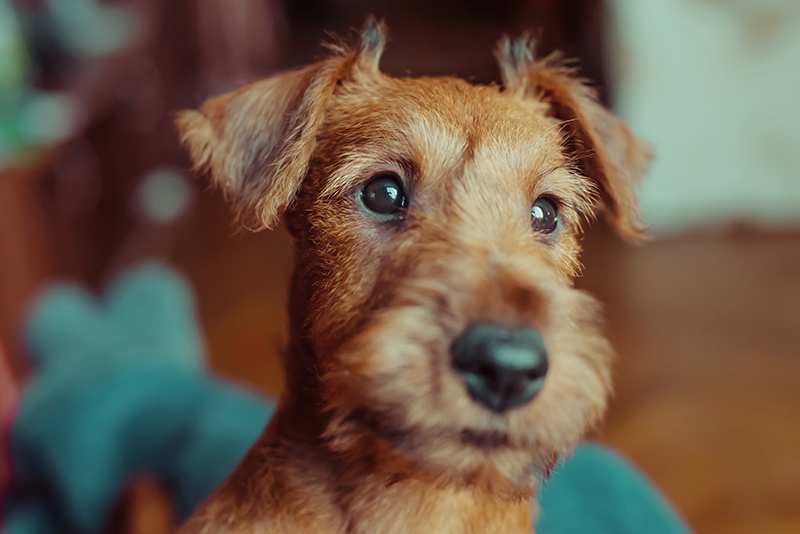
History
It is believed that the Irish Terrier is one of the oldest terrier breeds, descending from the now-extinct Black and Tan Terrier and a larger wheaten-coloured terrier. The breed was first recognised in the UK in 1875 and by 1879 had become quite prolific – in the 1880s they were the fourth most popular breed in Britain.
In fact, it was the Irish Terrier who led the way for ear cropping to be banned in 1899 in Britain, after the Irish Terrier Club stated that all Irish Terriers born after a certain time must not have cropped ears if they were to be shown.
During World War I, Irish Terriers were used as messengers and guard dogs, with many receiving awards for their courage. They have slowly fallen out of popularity over the last century.
They made their way to the US around 1880 and were recognised as a breed by the AKC in 1885. As of 2013 they rank as 123rd out of the 180 AKC-recognised breeds.
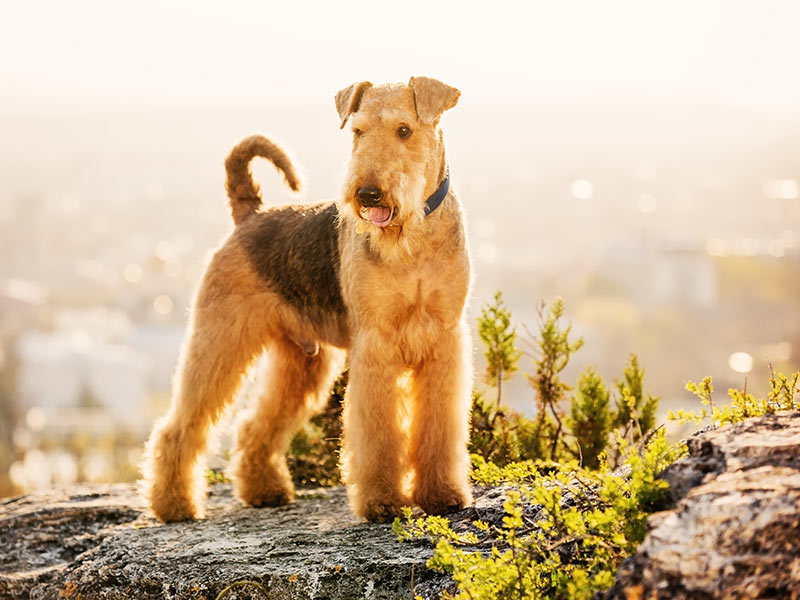
Irish Terrier Facts!
- Former Prime Minister Mackenzie King of Canada was an enthusiast of the breed and held séances to communicate with his deceased Irish Terriers.
- Bored Irish Terriers have been known to dig holes, searching for moles or rodents, so keep him occupied to avoid this happening.
- Despite being grey, the dog Tramp in Lady and the Tramp was drawn to resemble an Irish Terrier
- The Irish Terrier used to be one of the most popular breeds in America. In 1929, they were ranked 13th by the AKC as opposed to 123rd. Today, only around 300 are born each year in the US.
Free engraved pet ID tag on sign up3
Customer Satisfaction
21 day cooling off
Easy to use Pet Portal

GapOnly® in vet claims
SEE MORE
Irish Terrier Club of Australia: http://www.irishterrierclub.com/

